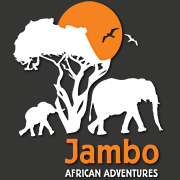Chove and Savuti Overview
North of the Okavango Delta and occupying 4200 square miles is Chobe National Park, the second largest in Botswana. This park has a variety of habitats ranging from the verdant floodplains, grasslands and thickets bordering the Chobe River, to forest, mopane woodland and scrub. The original inhabitants of this area were the San people. They were hunter-gatherers who moved from one area to another in search of water, wild fruits and wild animals. A major feature of Chobe National Park is its elephant population. The Chobe elephants comprise part of what is probably the largest surviving continuous elephant population in the world, estimated at about 100,000.
Chobe is also home to buffalo, hippo, lion, leopard and hyena. Game viewing here is by open four-wheel drive vehicles as well as in small boats on the river. Game viewing is at its best during the dry season (April – October), when the majority of natural pans have dried up. Savuti is an arid region located in the southern part of Chobe National Park. Bisected by the Savuti Channel, this strange waterway seemingly has a mind of its own. After remaining dry for 100 years, it abruptly flooded again in the 1950’s and remained flooded until the early 1980’s, when subterranean earth movements caused it to dry up once more. Savuti has open plains which are the permanent home of elephant, lion and spotted hyena. Large herds of Burchell’s zebra visit the region in late summer (February – March).
Climate
Average daytime temperatures in the Dry season (April to October) start at 30°C/86°F in April, and by October they’ve climbed to a very hot 35°C/95°F. Conditions stay fairly hot in the first two months of the Wet season (November to March), before the heavy storms of January and February sweep away the worst of the heat.
Chobe and Suvati:
Chobe NP has several areas that can be visited. The most popular and accessible area is the riverfront, which is just outside Kasane. Chobe Gate is located 6km/3mi west of Kasane and 80km/49mi west of Victoria Falls. The drive from Victoria Falls takes just over an hour. Boat trips leave from Kasane directly into the park. Visitors to this area usually fly into Kasane Airport (BBK), and self-drive visitors can pick up their 4x4 at the airport. The Savuti and Linyanti areas can be reached by 4x4 in the Dry season, but most people fly-in by chartered plane to their lodge. Another popular point of entry to the country is Maun Airport (MUB). From here you can fly on to Kasane. Driving is also possible – it’s about 600km/370mi
Chobe offers great wildlife viewing. The park is renowned for big concentrations of elephant and buffalo that come to drink at the river. Other mammals that are usually spotted on the shore are bushbuck and puku. Lions often lie in ambush near the river waiting for an opportunity, but spotted hyena, leopard and cheetah are more easily seen inside the park. Rhino are absent.
Best Time to Visit
You can see animals year-round at Chobe, but the Dry season (April to October) is when wildlife viewing is at its best here, particularly along the southern bank of the park’s broad, namesake river. You’ll also see some unforgettable sunsets across the water at this time, though you’ll be elbowing the high-season crowds while checking them out.








